Tiny in size and variable in color, mustard seeds are no less flavorful and pungent despite their miniscule size, with a distinct taste profile used as a seasoning or spice in a variety of cuisines known for aromatic and herbal flavors that are bolstered by the presence of such a seed spice.
Mustard seeds, however, may require substitution in a recipe where they would normally be incorporated into, likely due to a variety of reasons concerning dietary restrictions or a simple lack of availability of the seed, necessitating a similar enough food product be used.
The best mustard seed substitutes for pickling are turmeric root, turmeric powder, horseradish, or caraway seeds. The best alternative mustard product substitutes for mustard seeds are mustard condiment or mustard leaves/greens. The best flavor substitutes for mustard seeds are wasabi, ginger paste, or prepared horseradish product.
Why Should Mustard Seeds be Substituted in a Recipe?
The particular reasoning behind the substitution of mustard seed can be due to any number of circumstances such as a particular allergy or dietary intolerance towards the mustard plant and its subsequent products, or a particular gastric sensitivity to pungent seasonings and food products.
Other reasons a recipe may require substitution of mustard seeds in its ingredient list are simple personal preferences of the meal’s consumers, a lack of availability in concerns to mustard seeds, or even the desire to add a personal flair to an otherwise traditional recipe by the chef.
What Flavor Does Mustard Seed Give?
Similar in flavor to mustard leaves and other edible portions of the mustard plant, mustard seeds in their fresher form present a distinctly pungent and earthy flavor belied by an undercurrent of bitterness that is further accented by notes of sweetness in the aftertaste.
The intensity of mustard seed’s particular flavor profile may depend on the freshness of the mustard seed and the specific coloring of said seed, with yellow mustard seeds being somewhat sweeter and less pungent while brown and black mustard seeds are found to be the most potent in terms of flavor and pungency.
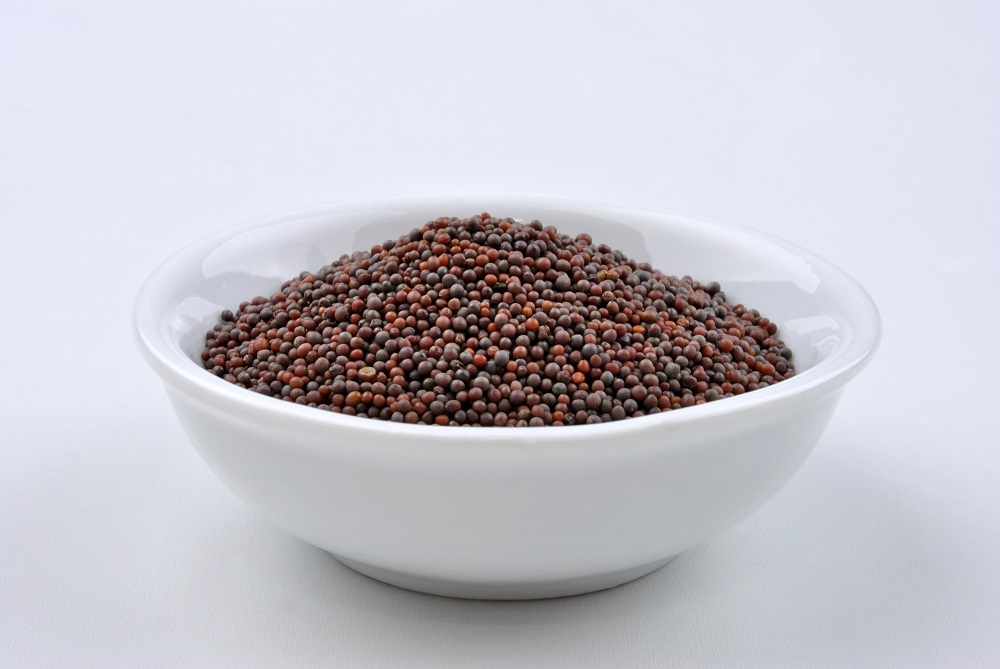
The flavor of mustard seeds may be further intensified by “creaming” or otherwise grinding up the seeds so as to release their particular aromatic oils and similar flavor compounds.
This is usually performed alongside the incorporation of other ingredients so as to create what is known as prepared mustard, also referred to as condiment mustard.
What Can be Used Instead of Mustard Seeds in Pickling?
A primary use of mustard seeds is its ability to intensify and otherwise impart certain flavors to the pickling of certain vegetables or meats so as to improve its specific flavor profile as a whole.
Capable of adding such notes of taste like an undercurrent of bitterness or a particular level of pungency that is said to pair quite well with pickled cucumbers and similar pickled food products.
This particular characteristic is not native entirely to mustard seeds, however, and as such is perfectly capable of being substituted with certain other ingredients that may be incorporated into the pickling process in much the same way mustard seeds would be.
Turmeric Root
A less commonly seen form of turmeric in the grocery store, turmeric root is the original undehydrated form of turmeric powder that is considered somewhat more pungent due to its freshness and higher volume of curcumin, the compound responsible for its yellow color and pungent flavor.
Turmeric root may be sliced into medallions or ground up into a paste in order to be used as either a pickling substitute for mustard seed or as a flavor substitute in any sort of recipe that usually calls for mustard seeds themselves.
With a comparable level of pungency between the two ingredients, turmeric root may be used in a two to one ratio as a mustard seed substitute, wherein every teaspoon of mustard seed is equivalent to two teaspoons of turmeric root, making turmeric root an excellent substitute to the pungent seeds despite this difference in volume.
Turmeric Powder
The ground and dried form of turmeric root, turmeric powder or turmeric seasoning is far more easily acquired than its root form, with the added benefit of being easily distributed throughout a recipe or pickling fluid, unlike the relatively solid consistency of turmeric root.
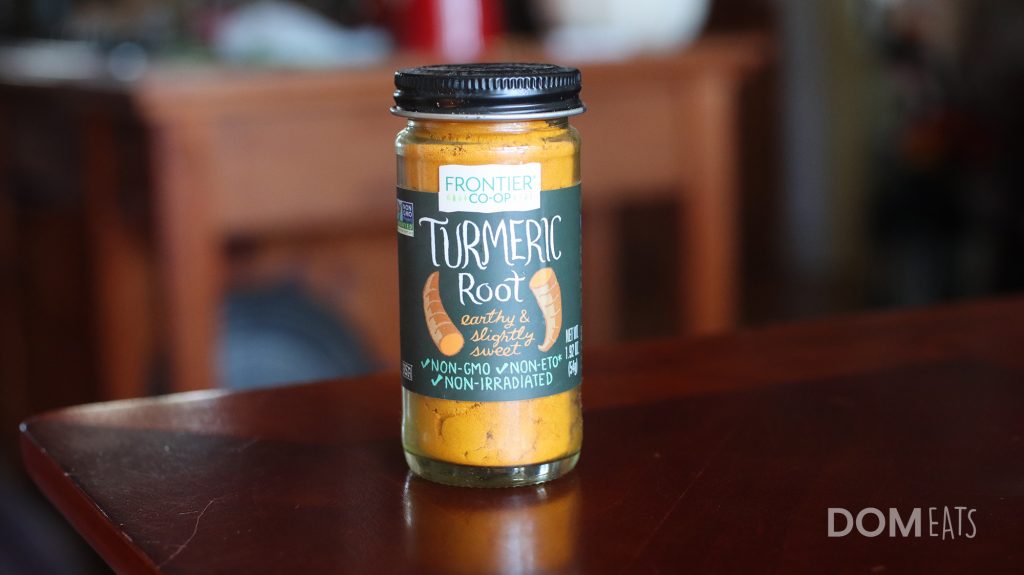
In terms of substitution for mustard seed, the relatively more compact nature of turmeric powder in comparison to its root form allows it to act as a replacement ingredient in a total one to one ratio, as opposed to the two to one ratio normally found in turmeric root.
Turmeric powder’s primary drawback is the fact that it may dye the pickling food product or the entire dish a deep orange to yellow hue, potentially ruining the appearance of the food.
However, if this alteration in visual appearance is not an issue, turmeric powder makes an otherwise excellent functional and flavor substitute for mustard seeds in a variety of capacities.
Horseradish
Considered the primary candidate in terms of substituting mustard seeds for practically any purpose they may be used in, horseradish is a root vegetable known for presenting similarly pungent and somewhat spicy flavor notes, especially if ground or otherwise processed in a manner that releases its particular chemical compounds.
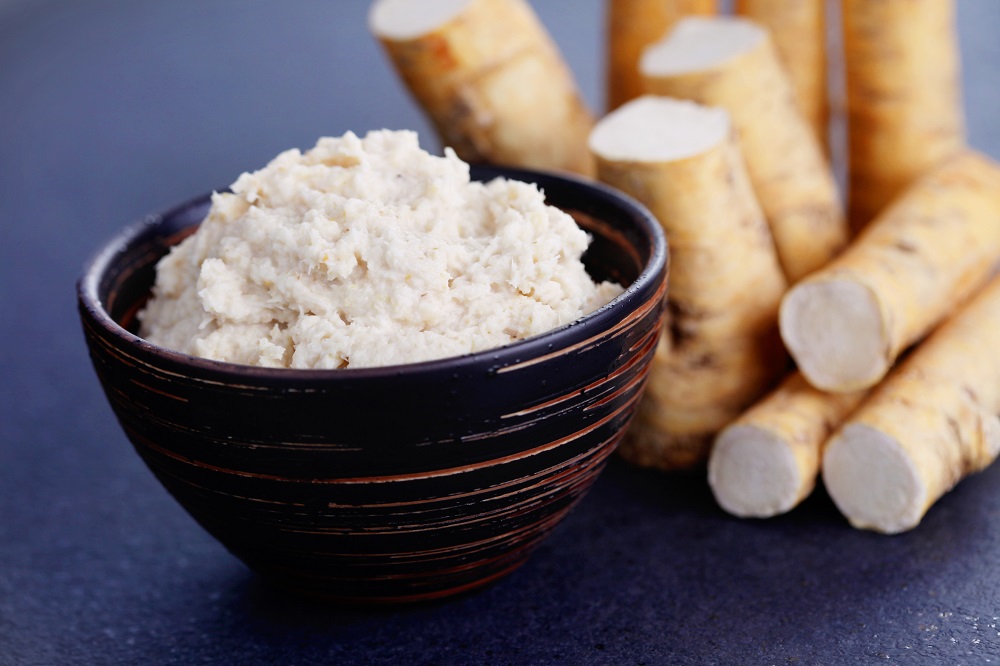
Horseradish may act as a mustard seed substitute in cooking or pickling in a one to two ratio wherein every teaspoon of horseradish root is equivalent to two teaspoons of mustard seed.
This difference in volume during the substitution of mustard seed is due to the fact that fresh horseradish may be somewhat more pungent and intense than mustard seed, potentially overpowering other ingredients in a recipe or ruining the flavor balance of the pickled food product.
Caraway Seeds
Also found in seed form, caraway seeds make an excellent substitute to mustard seeds both in terms of pickling and in general seasoning purposes due to the distinct similarity they share in terms of flavor notes.
This is most evident in the fact that caraway seeds possess a similarly pungent and slightly sweet flavor, carried by an underbody of earthiness that is quite similar to what would normally be found in yellow mustard seeds.
Due to the similarity in pungency and intensity, caraway seeds may replace mustard seeds in practically any pickling fluid or recipe ingredient list in a one to one ratio.
Alternative Mustard Product Substitutes
In the specific event that mustard seeds must be substituted in a recipe due to a simple lack of availability; it is entirely possible to instead use an alternative food product also derived from the mustard plant, allowing a nearly identical flavor profile and function to be achieved without the presence of actual mustard seeds.
These alternative mustard products may be more easily acquired than the seeds of the mustard plant, making them excellent substitutes for any chef pressed for time or on a budget.
Mustard Condiment
The most famous mustard product, mustard in its condiment form is available practically anywhere in the world, easily acquired in its whole grain form or completely macerated into a spreadable fluid that may be dolloped onto whatever recipe requires it.
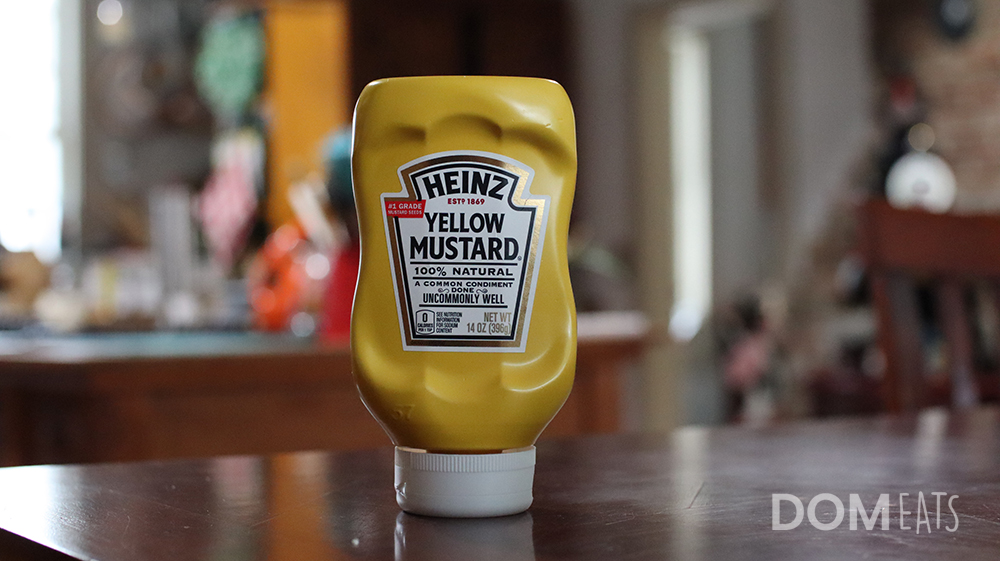
As a mustard seed substitute, mustard as a condiment may present a somewhat differing or more simplistic flavor profile owing to the fact that the majority of mustard condiment brands tend to dilute their products and add additional ingredients so as to create a condiment with more appeal to the masses.
As such, it is best to first taste test one’s particular brand of mustard condiment prior to using it as a mustard seed substitute in a recipe so as to ensure that its particular flavor profile will mesh well with the other ingredients present in the recipe.
Mustard Leaves or Mustard Greens
Referred to interchangeably as either mustard leaves or mustard greens, the leaves of this particular species of mustard plant are often used in such recipes like salads and sandwiches so as to impart a more mild but no less distinct pungency said to be occasionally more spicy than what would be found in mustard seeds.
The primary drawback to utilizing mustard greens as a mustard seed substitute is the fact that they are incapable of withstanding the same sort of cooking processes that mustard seeds would, with the mustard greens shriveling and darkening when subjected to dry heat and otherwise losing their physical consistency when boiled or steamed.
As such, the best use for mustard greens as a mustard seed substitute is by way of its addition after the dish has been cooked, allowing them to retain their appearance and physical integrity while still imparting much the same flavor profile to the recipe.
Flavor Substitutes for Mustard Seeds
Known for a rather intense flavor profile primarily consisting of a pungent body accented by bitterness and mild notes of sweetness in the aftertaste, mustard seeds are distinct in practically any recipe they are incorporated into, with their removal in a dish being quite noticeable in the total flavor profile.
To combat this, certain potential substitute ingredients for mustard seeds may present a similar level of pungency or even are capable of replicating the entirety of mustard seed’s flavor profile, making their ability to substitute mustard seeds in a recipe nearly imperceptible when paired with other ingredients in the dish.
Wasabi
Though different in terms of the finer notes found in their flavor profiles, wasabi is nonetheless an excellent substitute to mustard seeds in concerns to the pungency of the two ingredients, with wasabi in its fresher form being capable of matching the spiciness and intensity of flavor that mustard seeds would normally impart to a dish.

Wasabi may be used in a one to one volume ratio for mustard seeds, with its paste-like form making it far more convenient for dissemination through a dish than the unground form of mustard seeds, yet another bonus to utilizing the pungent Japanese root paste as a substitute ingredient.
Ginger Paste
Sweeter and sharper in flavor, ginger in its ground form may act as a potential substitute for mustard seed’s pungency and spiciness so long as it is paired with certain other ingredients that may cover up its otherwise more tart flavor notes.
Ginger paste is best used as a flavor substitute for mustard seed in such situations like pickling or as a condiment ingredient wherein the acidity or presence of other spices will overpower the finer taste notes found in the flavor profile of the ginger paste.
Prepared Horseradish Product
Considering the fact that horseradish is considered one of the best possible substitutes for practically any mustard ingredient, it should be no surprise that the subsequent processed product produced from the ground up horseradish root would be all the more suitable a substitute for mustard seeds.
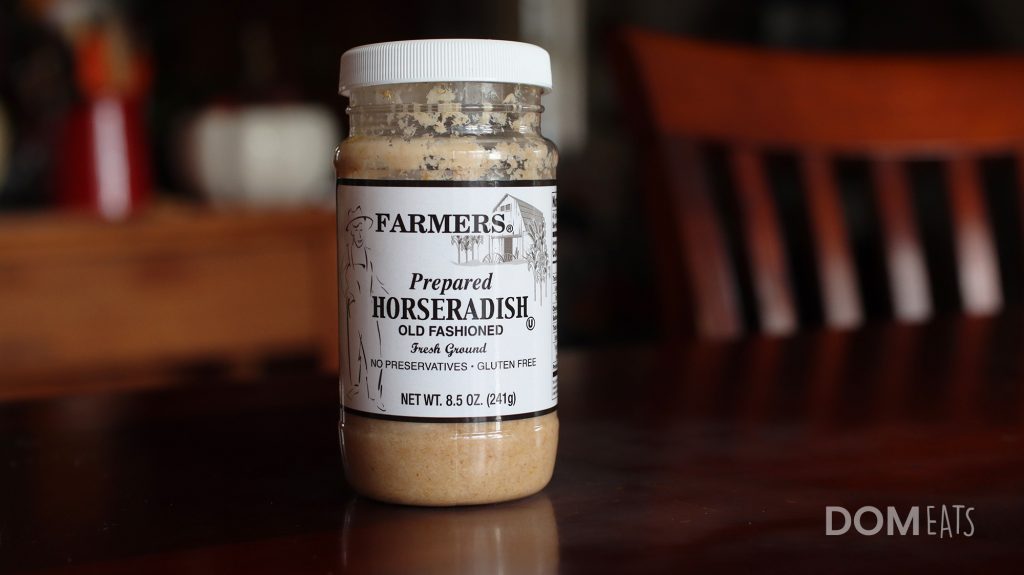
Prepared horseradish is considered even more pungent and spicy to the taste than horseradish root on its own due to the fact that it is treated with certain compounds and infused with vinegar and similar ingredients so as to bring out its flavor in an even more distinct manner.
This is further compounded by the fact that the horseradish is either ground or diced, allowing more of its chemical compounds to be leached out by the surrounding fluid and producing an ingredient quite similar in intensity and flavor to mustard seeds.
Prepared horseradish may be used in a direct one to one ratio for the purposes of general cooking or in a one to two ratio for pickling, due to the fact that prepared horseradish contains products that are also normally used in the pickling process, making a larger volume unnecessary and potentially overpowering.
References
1. Azimova S.S., Glushenkova A.I. Sisymbrium erysimoides (Desf.) In: Azimova S.S., Glushenkova A.I., editors. Lipids, Lipophilic Components and Essential Oils from Plant Sources. Springer; London, UK: 2012. p. 274.
2. Yan Tian & Fangming Deng (2020) Phytochemistry and biological activity of mustard (Brassica juncea): a review, CyTA – Journal of Food, 18:1, 704-718, DOI: 10.1080/19476337.2020.1833988
3. Robert Harold Callihan. (2000) “Mustards in Mustards: Guide to Identification of Canola, Mustard, Rapeseed and Related Weeds” Cooperative Extension System University of Idaho. Cooperative Extension System, Washington State University. Cooperative Extension, Western Rural Development Center Retrieved via Google books

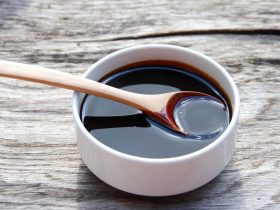
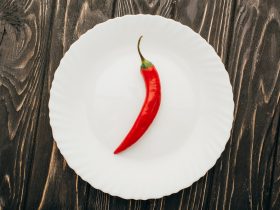
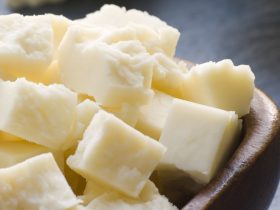
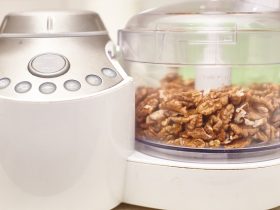
Hi, I'm Dom
Dom Eats was started to help other people fall in love with food. While cooking can feel intimidating, it doesn't have to be.